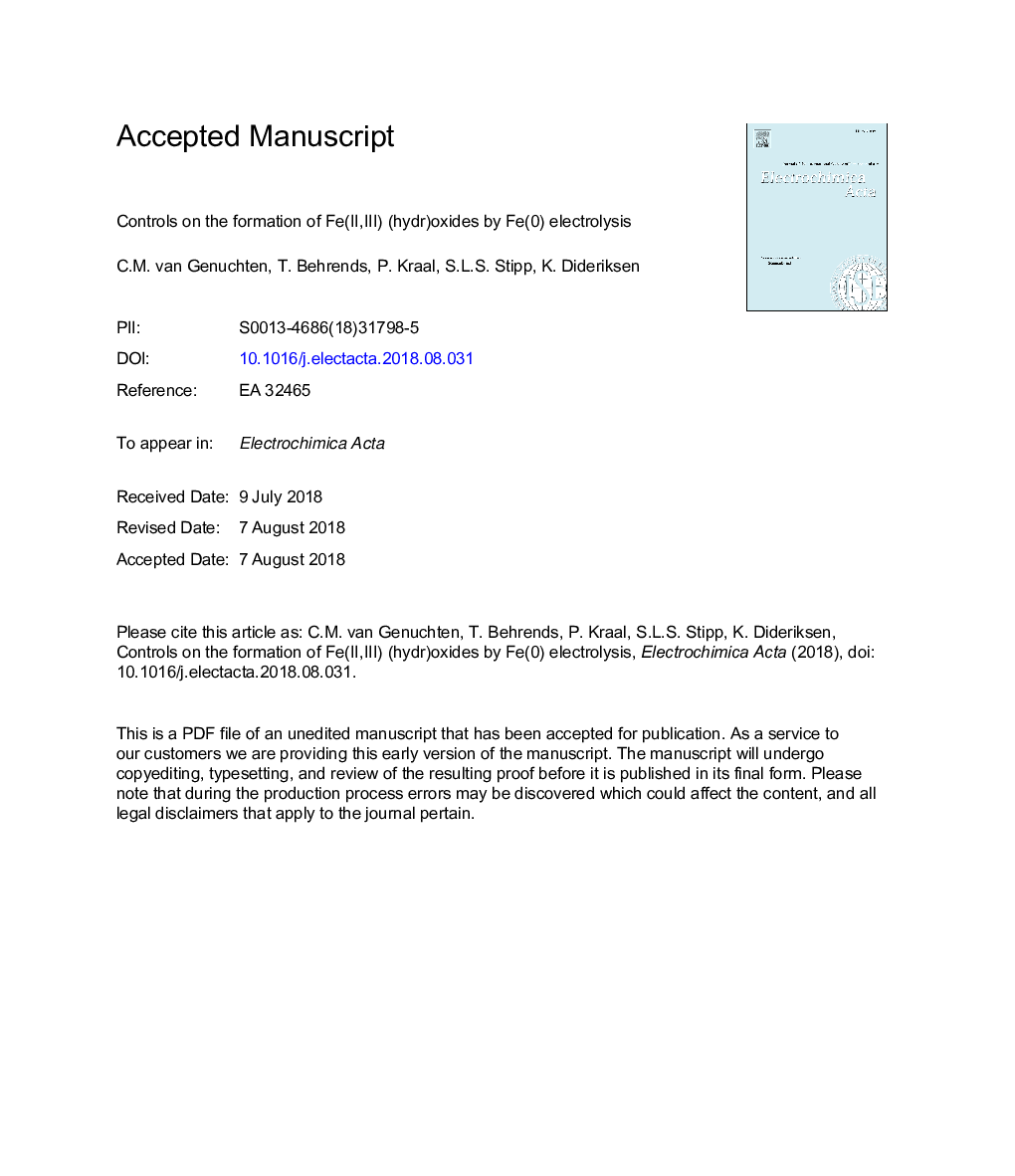| Article ID | Journal | Published Year | Pages | File Type |
|---|---|---|---|---|
| 11000507 | Electrochimica Acta | 2018 | 49 Pages |
Abstract
This study identifies the electrochemical and solution chemical controls on the production of Fe(II,III) (hydr)oxides formed by the electrolysis of Fe(0) metal, also knows as Fe(0) electrocoagulation. EXAFS spectroscopy and X-ray diffraction were used to characterize the solids produced as a function of: i) applied current, which corresponded to iron(II) production rates of 30-300â¯Î¼Mâ¯minâ1, ii) pH and iii) background electrolyte. Two systems were investigated where: i) the dissolved oxygen (O2) concentration was maintained at 0.1, 0.3 and 3.0â¯mgâ¯Lâ1 and ii) the O2 drifted in response to varied Fe(II) addition rates. A narrow range of O2 separated the domains for Fe(II,III) and Fe(III) (hydr)oxide formation. At O2â¯â¥â¯0.3â¯mgâ¯Lâ1, Fe(III) solids dominated, while Fe(II,III) (hydr)oxides were the principal phases at O2â¯=â¯0.1â¯mgâ¯Lâ1. The highest fraction of Fe(II,III) (hydr)oxides formed in the O2 drift experiments at the highest Fe(II) production rate, i.e. 300â¯Î¼Mâ¯minâ1. The background electrolyte determined the type of Fe(II,III) (hydr)oxide that formed: NaCl solutions favored magnetite and NaHCO3 solutions favored carbonate green rust. Our results are consistent with an Fe(II,III) (hydr)oxide formation pathway where Fe(II) addition after O2 depletion leads to rapid (<10â¯min) transformation of precursory Fe(III) precipitates.
Related Topics
Physical Sciences and Engineering
Chemical Engineering
Chemical Engineering (General)
Authors
C.M. van Genuchten, T. Behrends, P. Kraal, S.L.S. Stipp, K. Dideriksen,
